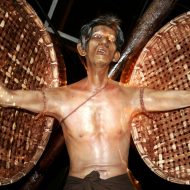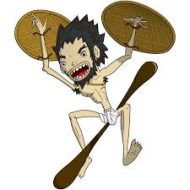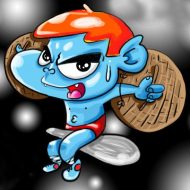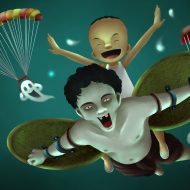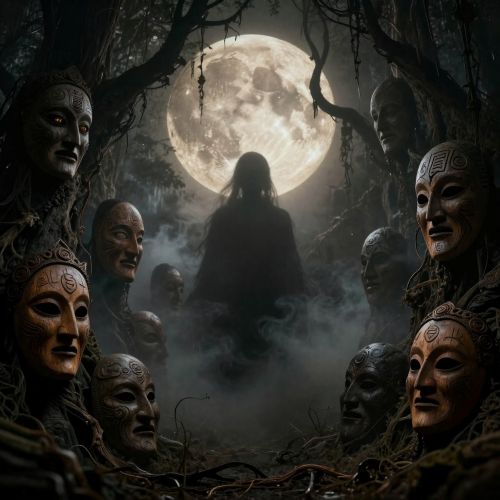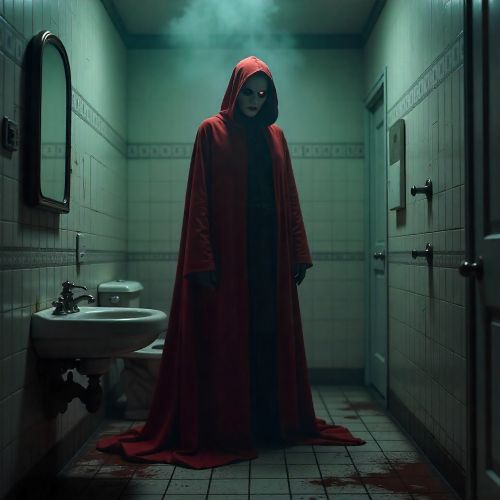Krahang : The Cursed Flying Man of Thai Folklore
Listen
At a glance
| Description | |
|---|---|
| Origin | Thai Mythology |
| Classification | Ghosts |
| Family Members | Krasue (Partner) |
| Region | Thailand |
| Associated With | Black Magic, Bloodsucking |
Krahang
Introduction
Krahang is a spectral figure in Thai folklore, predominantly depicted as a male entity. Traditionally, it is believed to possess a unique ability to fly, which adds to its allure and mystique in Thai mythology. Encounters with Krahang are said to often occur during the night, where it may appear to unsuspecting individuals. Predominantly found in rural areas of Thailand, the Krahang is part of the broader lore that includes various supernatural beings and spirits, reflecting the rich tapestry of Thai cultural narratives.
Physical Traits
Described typically as a tall and slender figure, the physical attributes of Krahang can vary somewhat based on regional beliefs. Most commonly, it is depicted as a man with a strong, muscular physique. Furthermore, one of the most distinct features associated with Krahang is its ability to detach its lower body from its torso. It is believed that when flying, the upper half of its body can soar through the air, while the lower half remains grounded. This terrifying trait is said to make it appear ghostly, further enhancing its fearsome reputation among locals.
Family
The family background of Krahang is often not elaborated upon in mythological tales. However, within the folklore, it is often positioned as a solitary figure, existing within the margins of society and typically not tied to a family in the traditional sense. In some narratives, it is implied that Krahang can be seen as an outcast or a transitory figure, frequently shunned by society. That said, the narratives that exist occasionally mention its ties to spirits or other supernatural beings, reflecting the interconnectedness of various entities within Thai mythology.
Other Names
Krahang’s name (กระหัง) derives from Thai words referring to flying or soaring motion, though interpretations vary across regions. In Laos and Cambodia, similar legends exist under different names, such as Krahong or Krahong Phi, showing its cross-cultural presence in mainland Southeast Asia.
In English-language sources, he is sometimes called the “Flying Man Ghost”, “Spirit of the Night Skies,” or the “Male Counterpart of Krasue.” While regional details differ, the essence remains constant: a man transformed into a cursed nocturnal being due to moral or magical corruption.
Powers and Abilities
The Krahang is attributed with several supernatural powers and abilities. Chief among these is its notable capacity for flight, a trait often linked with freedom but also danger, as it represents a being that is beyond mortal constraints. In addition, Krahang is believed to possess various magical powers, allowing it to manipulate the element of fear among humans. It is said that Krahang can invoke nightmares and is frequently associated with phenomena like sleep paralysis or disturbing dreams for those who encounter its spirit.
In some accounts, it is believed that the Krahang can bite or infect individuals, leading to ailments or mental disturbances. Its magical prowess may also include shapeshifting abilities, allowing it to take on different forms to appear more terrifying or to blend into human society unnoticed. These attributes not only highlight the Krahang’s status as a mythical creature but also serve as cautionary elements in narratives, often warning against certain behaviors or societal transgressions.
Modern Day Influence
In contemporary Thai culture, the legacy of Krahang continues to thrive, reminding us of its significance in historical tales and personal beliefs. Modern depictions of the Krahang are witnessed in various forms of media, including literature, film, and art, often portrayed in folklore-based horror films that capture the enduring fear associated with such supernatural entities.
Furthermore, the concept of the Krahang extends to the realm of popular culture, where it has begun to be referenced in music and modern storytelling, further embedding it in the cultural consciousness of a new generation. These adaptations often serve the dual purpose of entertaining while also preserving the traditional narratives associated with the Krahang.
The Krahang also finds its place in discussions surrounding spirituality in Thailand, as many people continue to invoke traditional beliefs in healing, rituals, and protective practices that reference the mythological creature. In some cultural ceremonies, the spirit of Krahang may be appeased or invoked for protection against maladies and misfortune.
Through the lens of social media, the Krahang has even been adapted into memes and online narratives, showcasing how folklore can evolve and engage with modern audiences. Such transformations keep the spirit of the Krahang alive, serving as a cultural touchstone that bridges traditional beliefs with the contemporary digital landscape.
In conclusion, the Krahang is more than just a mythical being; it embodies a rich aspect of Thai folklore that resonates through various cultural practices and modern adaptations. Its portrayal illustrates the complexity of human fears and desires, providing a deep insight into how ancient beliefs can inform contemporary society. The Krahang remains a powerful symbol within Thai mythology, reflecting the enduring narrative power of folklore and its influence across generations.
Related Images
Source
Terwiel, B. J. (1994). Monks and Magic: Religious Mediation in Thai Society. University of Hawaii Press.
Keyes, C. F. (1977). The Golden Peninsula: Culture and Adaptation in Mainland Southeast Asia. Macmillan.
Wikipedia contributors. (n.d.). Krahang. In Wikipedia, The Free Encyclopedia. https://en.wikipedia.org/wiki/Krahang
ThaiFolklore.org. (2022). Krahang – The Flying Man Ghost of Thailand. https://www.thaifolklore.org/krahang/
ThaiPBS World. (2021). Myths and Spirits of Thailand: The Tale of Krahang and Krasue. https://www.thaipbsworld.com/krahang-and-krasue/
AncientOrigins. (2023). Krahang: Thailand’s Cursed Flying Spirit. https://www.ancient-origins.net/myths-legends-asia/krahang-0019824
CultureTrip. (2022). The Ghosts of Thailand: From Krasue to Krahang. https://theculturetrip.com/asia/thailand/articles/ghosts-of-thailand
BangkokPost. (2020). Fear Returns: Villagers Report Sightings of Krahang. https://www.bangkokpost.com/thailand/general/krahang
Frequently Asked Questions
What is the real story of Krasue?
The Krasue is a chilling figure of Southeast Asian folklore, typically depicted as a severed woman’s head with trailing entrails. This vengeful spirit, often said to be the result of a woman’s violent death or improper burial, floats through the night seeking blood to sustain itself.
What is the male version of Krasue?
The Krasue is a nocturnal female spirit rooted in Southeast Asian folklore. It is commonly associated with Krahang, a male spirit from Thai folklore, residing in similar regions. The Krahang is depicted as a spirit that hovers in the air above the ground, lacking a lower body. Consequently, the Krahang is sometimes regarded as the male counterpart to the Krasue in Thai folklore. It’s crucial to recognize, however, that despite their frequent mention together, the Krahang and Krasue are distinct entities with unique characteristics.
What is the Japanese folklore floating head?
In Japanese folklore, the floating head takes two forms: Rokurokubi, humans with necks that stretch to unnerving lengths, and Nukekubi, completely severed heads that fly at night. Both can be benevolent or malevolent, with stories depicting them as mischievous spies, vengeful bloodsuckers, or even tragic figures driven by a thirst for revenge. Despite their fearsome appearances, both types share a vulnerability during sleep when the head is detached, offering a glimmer of hope against their nocturnal terrors.
What is the myth of Krahang?
Krahang is a male spirit from Thai folklore known for its nocturnal activities. During the day, it lives as a normal villager, but at night, it transforms into a ghost. Krahang is often depicted as a shirtless man wearing a traditional loincloth, using two large kradong (round rice winnowing baskets) for flight. Some legends suggest that Krahang was once a man who practiced sorcery, but when the magic backfired, he turned into a ghost.


